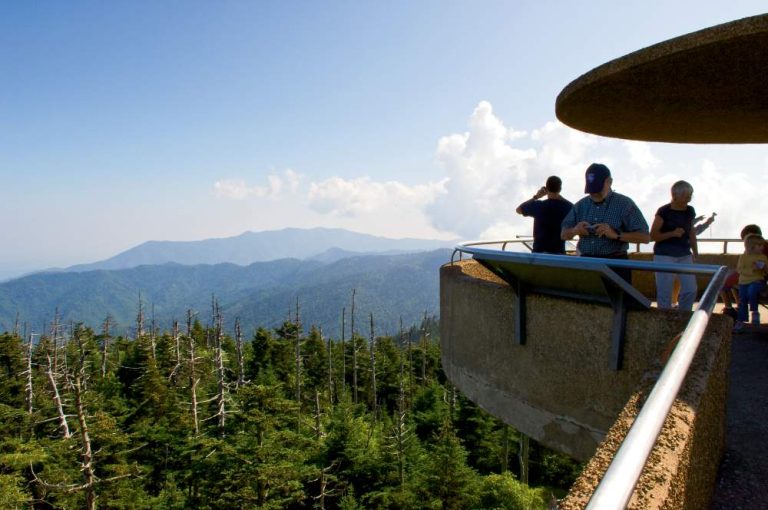National, State Parks Enhance Quality of Life in Tennessee
The Volunteer State's array of outdoor amenities and attractions adds to its appeal

Those who love spending time in the great outdoors are in luck in Tennessee. The Volunteer State lays claim to a standout system of parks that stretches to every corner of the state, making it easy for residents and visitors to pursue outdoor adventures such as hiking, rock climbing, canoeing and horseback riding.
Discover Tennessee’s Cuisines and Drinks
Tennessee National Parks, Recreation Areas
Straddling the border between Tennessee and North Carolina, Great Smoky Mountains National Park is the most-visited national park in the nation. The park covers more than 500,000 acres and includes 800 miles of hiking trails, 10 campgrounds and 1,500 types of plants. In addition, it’s home to Clingmans Dome, which extends 6,643 feet and is the highest point in both Great Smoky Mountains National Park and Tennessee.
Also in the eastern region of the state is a portion of the 24,000-acre Cumberland Gap National Historic Park, located where the borders of Tennessee, Kentucky and Virginia meet. Visitors have access to more than 80 miles of trails, back-country campsites, limestone caves and cascading waterfalls, along with historic buildings and structures built by early pioneers and Native Americans.
Nearby, Big South Fork National River and Recreation Area encompasses 125,000 acres of the Cumberland Plateau and offers whitewater opportunities in Big South Fork of the Cumberland River and its main tributaries, the Clear Fork, North White Oak and New River. Visitors can also enjoy activities like fishing, hiking, mountain biking, camping and horseback riding, and Big South Fork is one of only a few National Park Service units to allow hunting.
Why Tennessee has a Unique Innovation Sector
Tennessee State Parks, Outdoor Facilities
In addition to national parks, Tennessee is home to a state parks system with 56 parks and 85 natural areas that enhance the Volunteer State’s vitality beyond adding beauty and recreational opportunities. For example, a 2009 study conducted by the University of Tennessee estimated the economic impact of state parks resulted in more than $725 million in direct expenditures by state park visitors, proving that Tennessee’s state parks significantly contribute to local economies.
Tennessee’s largest and most-visited state park is Fall Creek Falls State Park, covering more than 26,000 acres in Bledsoe and Van Buren counties. The park is a favorite camping destination throughout the year, as it includes 222 campsites and 30 cabins. The park takes its name from Fall Creek Falls, s one of the highest waterfalls in the eastern U.S.
In East Tennessee, Elizabethton’s Sycamore Shoals State Historic Park is a perfect place for anyone interested in getting active while learning about the state’s history. Visitors can visit two historic homes, view living history re-enactments nearly every month and explore the park’s 2-mile Mountain River Trail on the south bank of the Watauga River that includes interpretive signs detailing the historical events of the area.
“Sycamore Shoals State Historic Park is steeped in history of the 18th century,” says John Kubenka, treasurer for both Friends of Sycamore Shoals State Historic Park and Friends of TN State Parks. “The centerpiece of the park is Fort Watauga, where many historic events that helped shape our great nation took place at Sycamore Shoals along the Watauga River.”
Also in East Tennessee, Knoxville is a top spot for outdoor recreation, and it’s only getting better. The Legacy Parks Foundation, an East Tennessee nonprofit organization focused on conserving natural resources, creating public places and connecting communities, launched the Outdoor Knoxville initiative in 2012 with the goal of increasing outdoor amenities, creating better access to recreational areas and promoting greater participation in outdoor activities.
“If you wake up on a Saturday morning and want to go exploring, you can go to our Outdoor Knoxville website and find any place, group or activity that’s available within a one-hour drive of the city,” says Carol Evans, executive director of the Legacy Parks Foundation. “From the Smokies to Big South Fork to the Ocoee River, there’s something for everyone, and we’re making it easy for people to know what our region has to offer. Plus, we’re fortunate to have an ever-expanding range of recreational opportunities and assets in our city limits, including the Outdoor Knoxville Adventure Center, a dense trail system covering more than 150 miles and several Tennessee River access points.”



